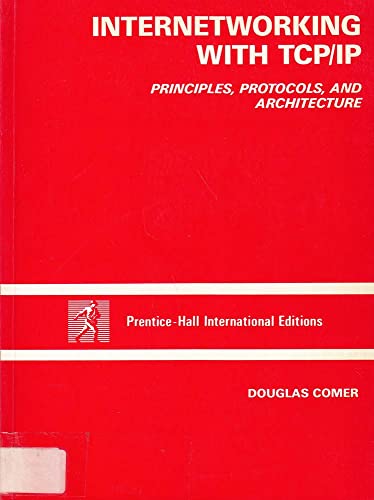Computer Networks And Internets Douglas E Comer Pdf Editor

Description For one-semester, undergraduate/graduate introductory computer networking courses in Computer Science, Electrical Engineering, CIS, MIS, and Business Departments. Written by a best-selling author and leading computer networking authority, this text builds a comprehensive picture of the technologies behind Internet applications. Ideal for those with little or no background in the subject, the book answers the basic question “how do computer networks and Internets operate?” in the broadest sense and includes an early optional introduction to network programming and applications.
The text provides a comprehensive, self-contained tour through all of networking from the lowest levels of data transmission and wiring to the highest levels of application software, explaining how underlying technologies provide services and how Internet applications use those services. At each level, it shows how the facilities and services provided by lower levels are used and extended in the next level. For instructors who want to emphasize Internet technologies and applications, the book provides substantial sections on Internetworking and Network Applications that can serve as a focus for a course. An accompanying multimedia CD-ROM and Website provide opportunities for a variety of hands-on experiences. • NEW - An integrated approach to learning—Combines the best of top-down networking with the best of bottom-up networking. Download Buku Kurikulum 2013 Sd Kelas 3 Revisi 2016 more.

• Exposes students to applications and gets them programming early, while delivering the material in logical order. • NEW - Updated and revised content throughout. • Supplies students with the most current information on networking and Internet technology.
Jan 1, 2013 - for the clocks we use in telecommunication and computer networks. In our last issue. First publication of Douglas Comer's book series Internetworking. On the Internet[1]. The objective of NTP is simple: to allow a client to synchronize its clock with UTC time, and to do so with a high degree of accuracy.
• NEW - Added chapter on UDP: Datagram Transport Service—Chapter 24 explains UDP and shows the package format. • Introduces students to an important topic for use with multicasting, message systems, and Internet telephony. • NEW - Added chapter on Network Address Translation—Chapter 26 explains the major variants of NAT including NAPT and shows how NAT works. • Explores a technology that allows multiple computers to share a single IP address—an important component of both residential and small business networks.
• NEW - Added chapter on IP Telephony—Chapter 33 covers the technology that allows voice telephone communication over the Internet. • Explains the protocols used for IP telephony, and discusses the problem of interfacing between an IP telephone system and the current public switched telephone network. • Broad and substantial coverage. • Provides students with in-depth discussions of topics such as: local and wide area networks, local access technologies such as ADSL and cable modems, dynamic web document technologies, network management, socket programming, address binding, IPv6, error handling with ICMP, and Virtual Private Networks. • Focus on concepts and principles. • Enables students to apply the principles they learn to new technologies in this evolving field where technologies may become obsolete in a few years.
• Flexible organization—Chapters can be covered in a variety of orders after students have completed Parts I and II. • Accommodates a wide variety of instructor/student/course needs and preferences. • CD-ROM included with every text—Features keyword search mechanism and links to the Website, which is updated continuously. • Supplies students with animated figures that help clarify concepts, over 200 photos of network wiring and equipment, and data files that can be used as input to student projects and figures from the text.